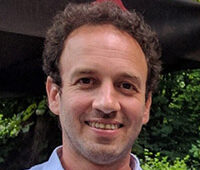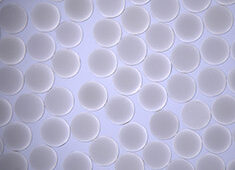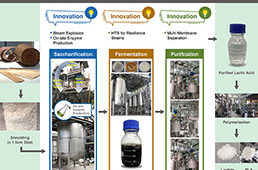No, not our health! We are fine, thank you. We want to discuss the health monitoring of bridges, high rise buildings, dikes, etc. As one of the writers of this column is Dutch, we thought it fitting to start this article with an example from below sea level: there is a voluntary organization the Dutch call Dijkwacht (dike guard) which has existed for more than 700 years now. Its purpose is to check the condition (or health) of a dike during storms or high tides. A company in the Netherlands is now proposing to replace these brave and loyal guards with a sensor system which is able to continuously check the condition of the dikes. This initiative is part of worldwide trend to minimize safety risks associated with civil structures by continuously monitoring them.
Safety is not the only driving force here; the ability to replace time-based maintenance with condition-based maintenance could also save money and minimize downtime. But what do these sensors look like? What do they contain? First, they are not just sensors, they are sensor systems that are a part of larger sensor networks. In addition to the sensor, the system contains a data processing unit (to minimize the amount of data sent and thereby minimize energy consumption), a transmitter/receiver, a battery, and often an energy scavenger. Efficient energy harvesting can make the sensor completely autonomous by omitting the replacement of batteries.
click to enlarge |
For many applications, size is not a critical matter. However, size reduction often goes together with cost reduction in production, increased sensitivity, and reduced energy consumption. Therefore, for many applications, and especially energy efficient wireless sensors in remote places, MEMS seems to become the technology of choice.
Does that mean that buying and implementing sensor networks for structural health monitoring (SHM) is a piece of cake? Unfortunately not. There are still serious barriers to overcome, as the most recent consultation workshop on SHM, organized by NEXUS, the European Microsystems Association, demonstrated. A lot of work still has to be done before the systems are fit for use in demanding and conservative applications such as for use in aircraft. However, there are several hotspots where developments are fast and promising, like SHM for civil infrastructure, offshore windmills, and the chemical industry (especially corrosion).
 People are even thinking of long-term visions such as smart dust or smart pebbles which can be used in concrete or asphalt, creating a kind of built-in SHM.
People are even thinking of long-term visions such as smart dust or smart pebbles which can be used in concrete or asphalt, creating a kind of built-in SHM.
It must be said that in whichever applications are chosen, the modeling of degradation, the prognosis of damage, and the understanding of the mechanisms behind failures are key elements. Other issues to consider are standards and the interfacing with the existing sensor networks.
As technology-oriented people, we believe that more sensors are the future, but will this be the end of the dike guards? We don’t think so. In moments of crisis it is not a bad idea to have a human being on the spot. And not only is it a useful job, it is fascinating and satisfying to see nature fruitlessly beating a human-built structure, even an apparently low key one like a dike. Besides that, we still need manual labor to plug the holes!
—Patric Salomon
enablingMNT, Germany Patric Salomon ([email protected]) offers services with a focus on marketing, public relations, and business strategy in micro- and nanotechnology. He is the vice-chair of NEXUS, the European Microsystems Association.
—Henne van Heeren
enablingMNT, The Netherlands Henne Van Heeren ([email protected]) is a specialist in MNT manufacturing, packaging, and technology in business-related issues. He is a member of the NEXUS Task Force on market research and an author of the MANCEF MNT roadmap. Salomon and van Heeren advise industry and public bodies on MNT product commercialization and business development. They publish a report series called enablingMNT Industry Reviews, www.enablingMNT.com.
Published in R & D magazine: Vol. 50, No. 3, June, 2008, p.47





